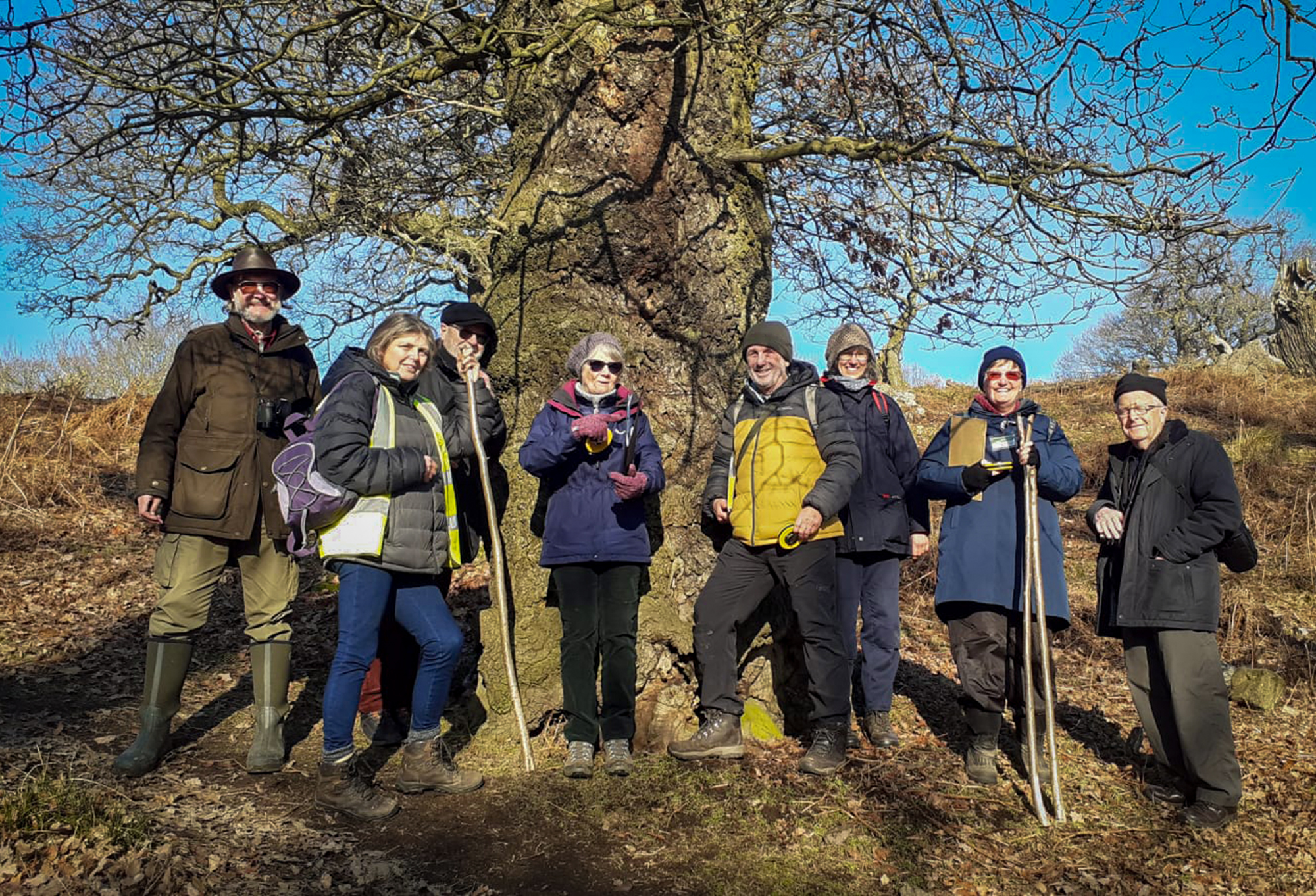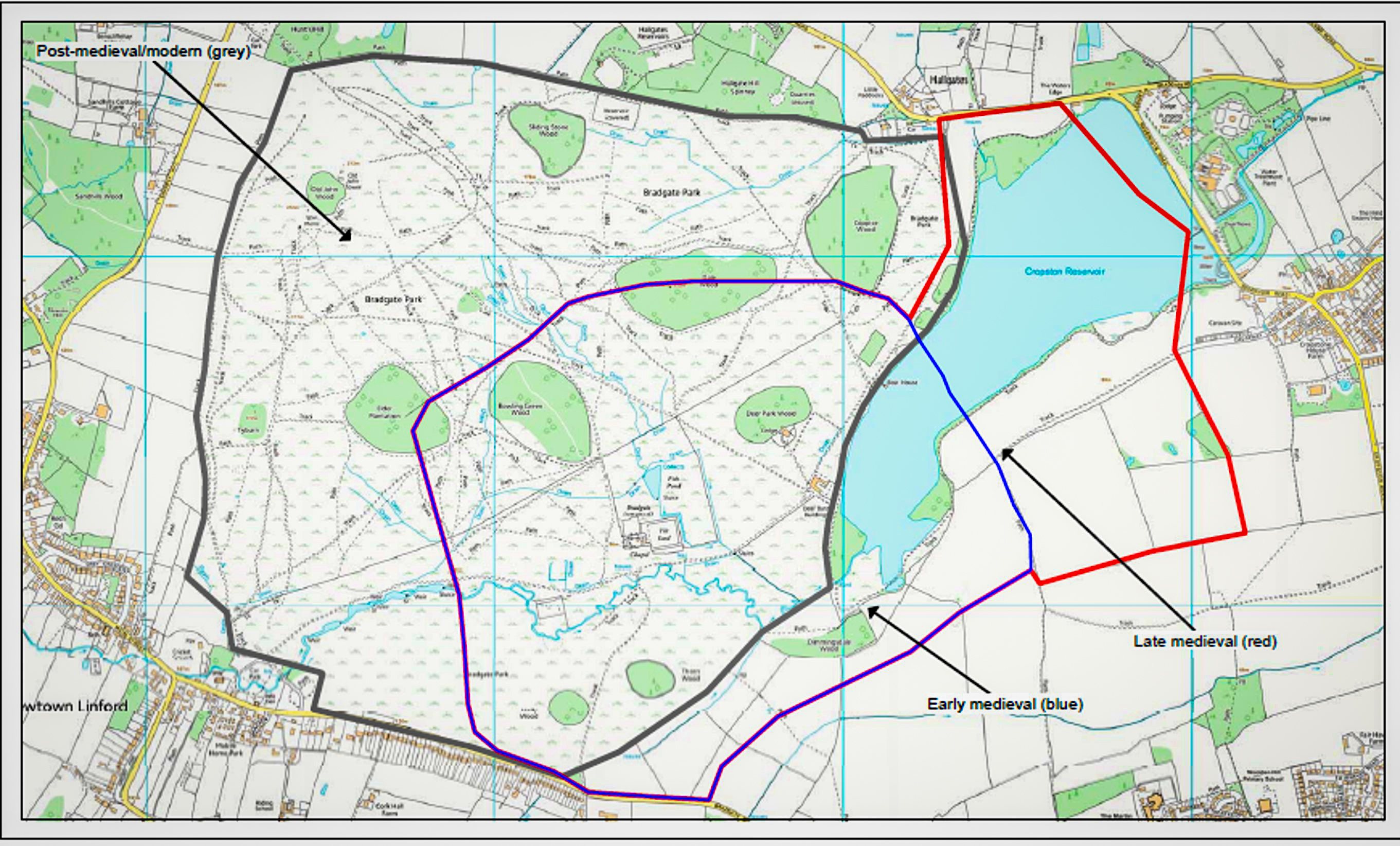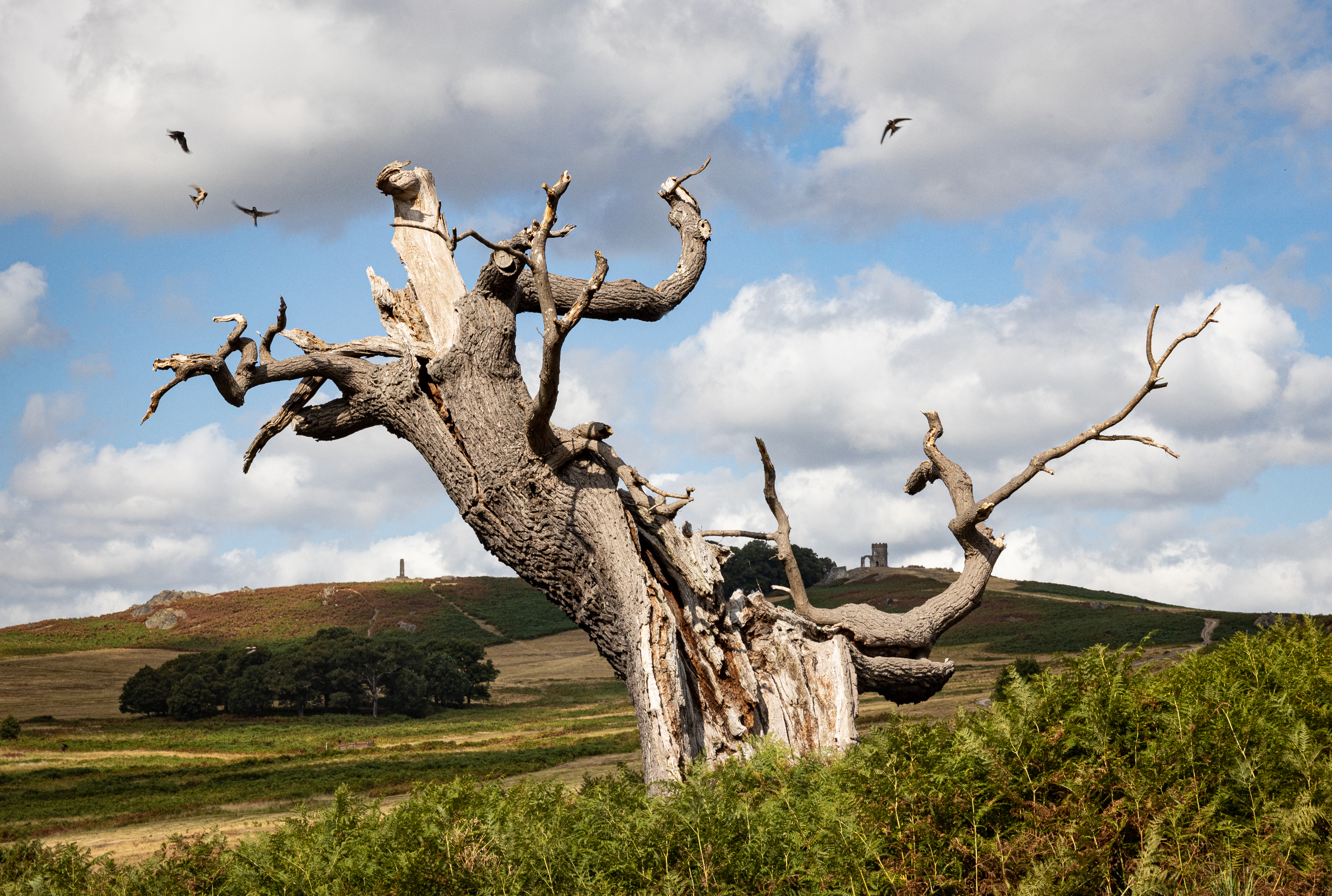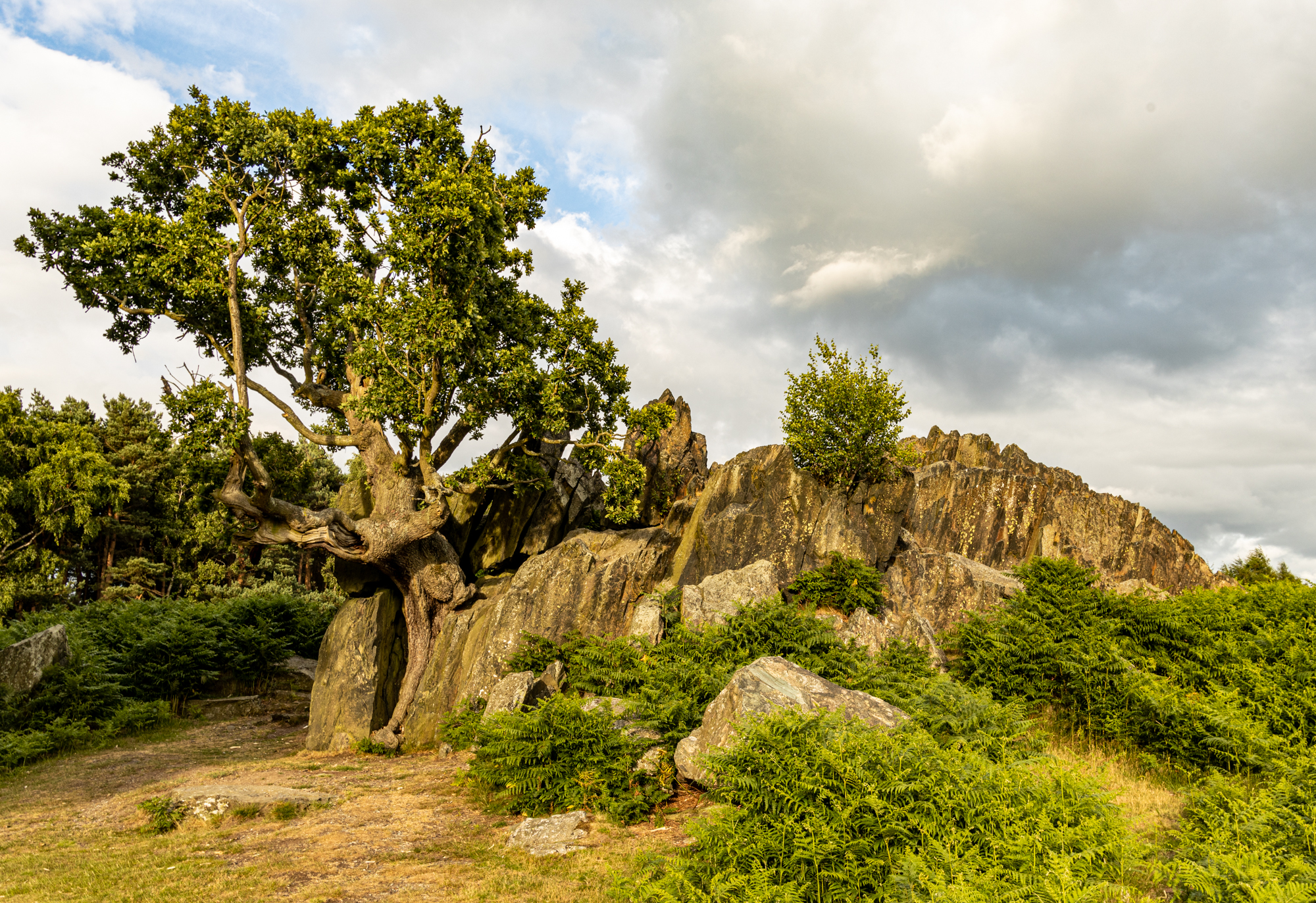Unveiling the Hidden Oak Tree Treasures: Adding Bradgate Park's Ancient Trees to the ATI Map
Robb Doyle, 17/01/2024
At the start of 2022, a volunteer at the Bradgate Park Trust in Leicestershire raised a question: "Why were so few of the park's trees documented on the Woodland Trust's Ancient Tree Inventory (ATI)?" What unfolded was a journey to uncover and map the missing ancient and veteran trees that hadn’t yet been added to the ATI website.
The Discovery
The Woodland Trust ATI showed around 50 trees recorded at Bradgate Park since 2007. A separate tree management survey conducted by the Bradgate Park Trust identified around 500 ancient and veteran trees among a total of 2000. The challenge was set – could these "missing trees" be added to the ATI? With a dedicated team of Bradgate Park rangers and volunteers, it was time to start an exciting new project.
The Bradgate ATI project
Recognizing the need for resources, the project leaders offered the team of volunteers a training afternoon. Twenty individuals attended, demonstrating their passion for the old trees in Bradgate Park. Over the next 12 months a series of monthly recording sessions took place. From a pool of 20 volunteers, 12 committed people turned up for every session. There were some very cold sessions during winter, but the surveying was always done with good heart and a big smile.

Some of the 20 Bradgate Park volunteer ATI recorders. Credit: Anonymous
Navigating the challenges
Equipped with Woodland Trust ATI guidebooks, tape measures, and customised recording sheets, the team tackled the trees the park, capturing not only the girth of each tree but also each tree's unique ecosystem. The girth of the trees is important as this gives an approximate indication of age. The number of trees to be examined each session needed to be carefully planned so each sub-team could work on a batch of trees in the same location. It took quite a lot of coordination to make sure no tree was missed or recorded more than once. With so many trees the challenge of managing "big data" emerged, especially in coordinating GPS locations, survey data, and photographs. This task was taken up by a small team of emerging technology gurus within the volunteer group.

The Google Map used for locating and recording the trees. Credit: Bradgate Park Trust
Knowledge and numbers
Over the course of the year, the team's knowledge grew. There were many engaging discussions about the ancient features of each tree. Regular visits from the Woodland Trust ATI verifier also helped deepen the group’s knowledge. At the time of writing, the Bradgate Volunteer group had successfully added 485 trees to the ATI, including 73 Notable, 316 Veteran, and 66 Ancient trees. There currently are a few more in waiting to be classified.

A veteran and ancient oak tree side by side in an area known as Hell Hole. Credit: Robb Doyle
Unveiling the Giants
The oldest oak, estimated to be over 800 years old with a girth exceeding 8.57m, serves as a living testament to Bradgate Park's rich history. Understanding the approximate age and location of these trees sheds light on the park's evolution from a medieval deer park to a Tudor residence and, eventually, a countryside sporting venue. Bradgate Park was first recorded as a deer park in 1241. There was a revival in the fortunes of the park in the Tudor period when the Grey family built and occupied Bradgate House. The most notable resident was Lady Jane Grey who became the “Nine Day Queen” in 1554. The house was occupied until 1739 when it was abandoned. However, not long after this, the park became known as countryside sporting venue mainly based around the shooting of pheasants and rabbits. The park became larger at this time, and spinneys of trees were added to accommodate the pheasants. The ancient oaks are found within the medieval boundaries of the very oldest parts of the park. This is consistent with the discussion in the book “Ancient Oaks in the English Landscape” by Aljos Farjon.

Bradgate Park was first recorded as a Deer Park in 1241 and has expanded in later years. Credit: Bradgate Park Trust
Legacy and Impact
The recording of Bradgate Park's trees on the Woodland Trust ATI was not only a success but also enriched the park's knowledge and understanding of its ancient trees and ecosystems. The data recorded will help the Park’s Rangers manage the conservation of the trees for decades to come. This new-found understanding will also be shared with park visitors through talks, guided walks, and photo walks.
“The enthusiasm and peoplepower put into this project by the ATI volunteers has been incredible and has significantly added to our existing survey data of the park’s tree stock. We’re incredibly grateful to the volunteers for putting Bradgate on the ATI map!”
James Dymond, Director, Bradgate Park Trust
The number and range of veteran and ancient trees raises Bradgate Park's status as the most significant site in the East Midlands for veteran and ancient oaks, and one of the UK's prime sites for ancient trees.

A pair of ancient oak trees in Hell Hole around 650 years old. Credit: Robb Doyle
The journey to add the missing trees of Bradgate Park to the ATI map stands as a testament to the power of community-driven conservation projects. With passion, dedication, and a touch of technology, the volunteers have not only enhanced a national inventory but also deepened their connection with the living history of one of the UK's most treasured parks.
Please contact Robb Doyle robbdoylephoto@gmail.com for more information.
A Few Favourite Bradgate Park Trees

A lone ancient oak looking over the deer grazing land. Credit: Paul Marriott

A good example of one of several phoenix trees. Credit: Robb Doyle

This dead veteran Oak is known locally as the Antler Tree as it echoes the deer in the park. Credit: Robb Doyle

A remarkable veteran cliff oak hanging onto the rocks at Sliding Stones. Credit: Robb Doyle
